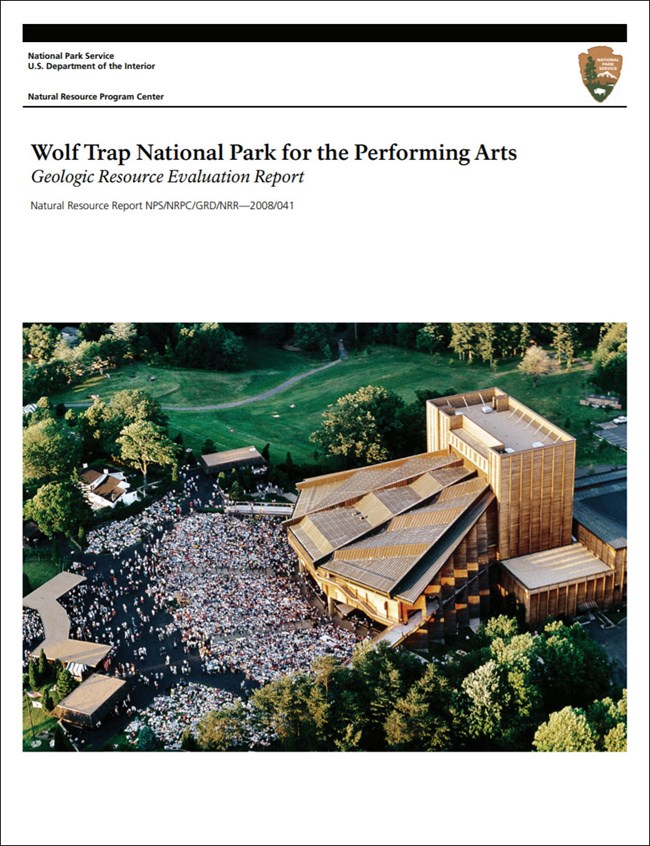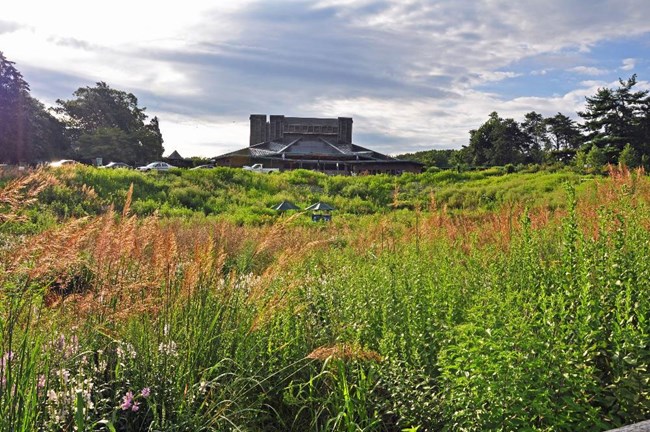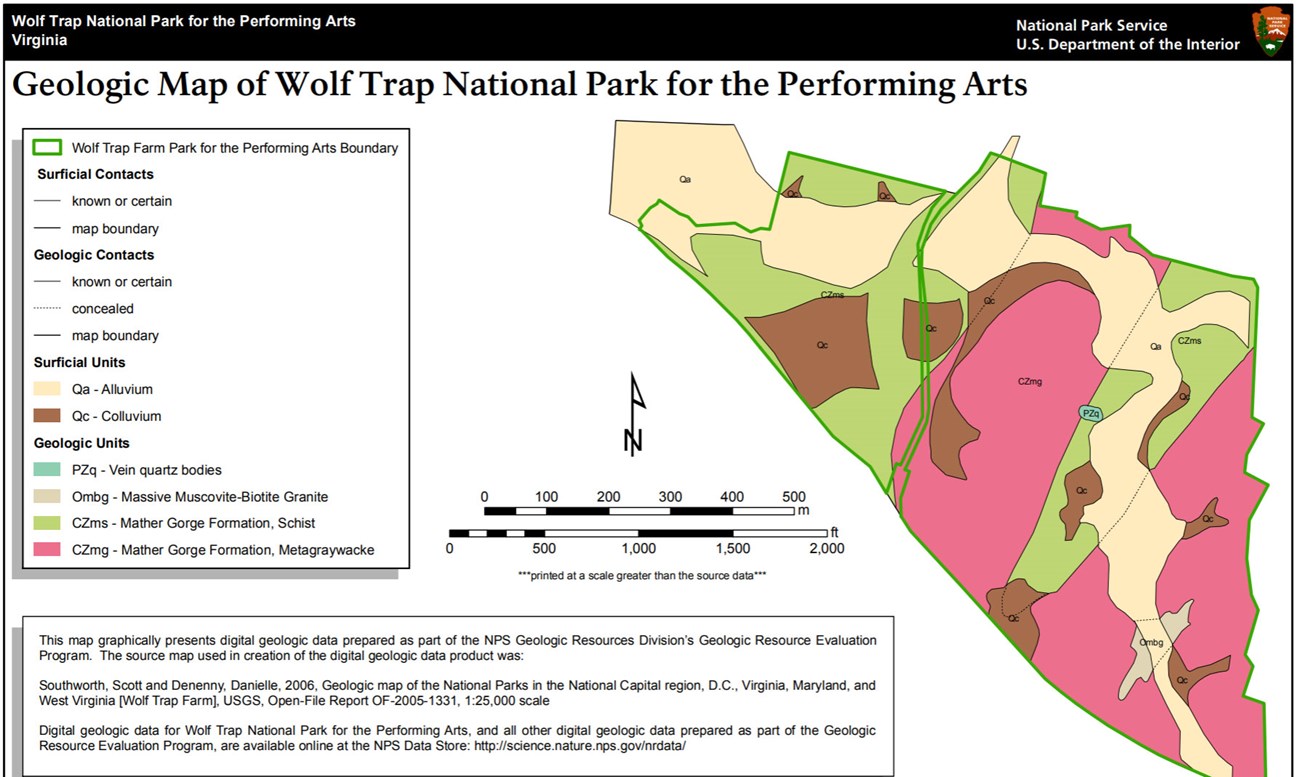Last updated: July 18, 2024
Article
NPS Geodiversity Atlas—Wolf Trap National Park for the Performing Arts, Virginia
Geodiversity refers to the full variety of natural geologic (rocks, minerals, sediments, fossils, landforms, and physical processes) and soil resources and processes that occur in the park. A product of the Geologic Resources Inventory, the NPS Geodiversity Atlas delivers information in support of education, Geoconservation, and integrated management of living (biotic) and non-living (abiotic) components of the ecosystem.

Introduction
Wolf Trap National Park for the Performing Arts (WOTR) is located in Virginia about 13 km (8 mi) west of Washington, D.C.. Originally authorized as Wolf Trap Farm Park on October 15, 1966, the park unit was redesignated on August 21, 2002, and encompasses approximately 52 hectares (130 acres) (Thornberry-Ehrlich 2008d; National Park Service 2016a). WOTR is the first and only national park for the performing arts and is home to the Filene Center, a premier open-air arts pavilion that has developed technical and operational capabilities that support a rich variety of programming. The Filene Center is named after Catherine Filene Shouse, an American researcher and philanthropist who donated land for the park with the vision to bring a diversity of performing arts to the public of the National Capital area (National Park Service 2013d). Today, the Filene Center continues to operate as an outdoor venue, hosting a variety of internationally acclaimed performing arts entertainment set against the rolling hills and woods along Wolf Trap Creek. Also located in WOTR is the Children’s Theatre-in-the-Woods, an outdoor amphitheater that offers diverse programs that introduce children to the world of performing arts, as well as the Meadow Pavilion that serves as a third venue for smaller shows and performances.
Geologic Setting
The bedrock geology of Wolf Trap National Park for the Performing Arts is dominated by metasedimentary rocks of the Neoproterozoic– Cambrian Mather Gorge Formation. Metagraywacke and schist of the formation are exposed along Wolf Trap Creek. In the southeastern portion of WOTR the Mather Gorge Formation has been intruded by Ordovician plutonic rocks consisting of light-gray, massive, muscovite–biotite granite (Southworth and Denenny 2006). Numerous vein quartz bodies of Paleozoic age have intruded the metasedimentary rocks and large blocks of quartz mapped near Wolf Trap Creek. The broad erosional valley of Wolf Trap Creek contains young, Quaternary-age surficial deposits of alluvium and colluvium that follow the course of the creek and fill the broad hollows in the meadows (Southworth and Denenny 2006).
Regional Geology
Wolf Trap National Park for the Performing Arts is a part of the Piedmont Physiographic Province and shares its geologic history and some characteristic geologic formations with a region that extends well beyond park boundaries.
- Scoping summaries are records of scoping meetings where NPS staff and local geologists determined the park’s geologic mapping plan and what content should be included in the report.
- Digital geologic maps include files for viewing in GIS software, a guide to using the data, and a document with ancillary map information. Newer products also include data viewable in Google Earth and online map services.
- Reports use the maps to discuss the park’s setting and significance, notable geologic features and processes, geologic resource management issues, and geologic history.
- Posters are a static view of the GIS data in PDF format. Newer posters include aerial imagery or shaded relief and other park information. They are also included with the reports.
- Projects list basic information about the program and all products available for a park.
Source: NPS DataStore Saved Search 3201. To search for additional information, visit the NPS DataStore.
A NPS Soil Resources Inventory project has been completed for Wolf Trap National Park for the Performing Arts and can be found on the NPS Data Store.
Source: NPS DataStore Saved Search 3226. To search for additional information, visit the NPS DataStore.

Related Links
Related Articles
Wolf Trap National Park for the Performing Arts
National Park Service Geodiversity Atlas
The servicewide Geodiversity Atlas provides information on geoheritage and geodiversity resources and values within the National Park System. This information supports science-based geoconservation and interpretation in the NPS, as well as STEM education in schools, museums, and field camps. The NPS Geologic Resources Division and many parks work with National and International geoconservation communities to ensure that NPS abiotic resources are managed using the highest standards and best practices available.

